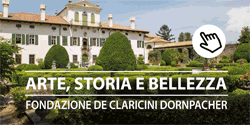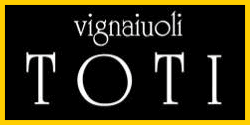Home / WHAT TO SEE /Vittorio Podrecca International Center
Vittorio Podrecca International Center
The International Center "VITTORIO PODRECCA-THEATER OF THE WONDERS OF MARIA SIGNORELLI" includes a small part of the whole MARIA SIGNORELLI COLLECTION of Cividale del Friuli.
The puppets, the puppets and all the exhibited pieces have been declared "of exceptional cultural interest" by the Ministry of Cultural Heritage and Activities and Tourism. They open the way to a cognitive path and study on what has meant, over the centuries, the puppet theater in Italy and in the world. The exhibition space shows both the history of the Compagnia dei Piccoli by Vittorio Podrecca, and the personality of Maria Signorelli, artist and intellectual, whose sensitivity allowed in the 60s to save most of the materials associated with the Compagnia di Podrecca, subtracting them from dispersion and oblivion. Vittorio Podrecca and Maria Signorelli also exemplify two modes of puppet theater, the puppet and the puppet, which historically constitute one of the cultural assets of our country. The history of Podrecca intersects with that of his family and the city of Cividale and allows us to retrace the salient facts of Italy at the turn of the nineteenth and twentieth centuries, a period of historical and cultural events important for our nation. After all, the story of puppets and puppets is intertwined with important historical events, telling in its own way, as in today's newsreel, the battles and revolutions that have changed our destiny, have spread cultures and ways of being , modified lifestyles and feelings, amplified social and cultural needs of our country. The puppets of Maria Signorelli, for their part, constitute a particular meaning of the Italian twentieth century figurative art, born as they are from the suggestions of the artistic and theatrical avant-gardes of the beginning of the century.
Artist of the most representative of the theater of the twentieth century, Maria Signorelli, born in Rome on November 17, 1908, lived since childhood in an environment full of cultural stimuli. At the age of twenty, he created his first Fantocci, soft sculptures, born of multiple suggestions, which were exhibited in Rome, Paris and Berlin. Set designer for the Teatro degli Indipendenti of Anton Giulio Bragaglia and then for the Teatro delle Arti in Rome, in 1937 he approached the puppet theater creating some puppets. In 1939 he married the pedagogist Luigi Volpicelli and in 1947 he founded the company L'Opera dei Burattini, whose actors, painters, scenographers, composers and filmmakers collaborated over time. A repertoire of great poetry came to life, staging shows such as King deer (Gozzi), The fairy tale of the goldfish (Puškin), The Nightingale and the rose (Wilde), La Tempesta (Shakespeare), Faust (Bonneschk) , L'Inferno (Dante), The French Revolution (Ceronetti), Antigone (Brecht). His particular virtuosity in conceiving dancing puppets made famous ballets such as Cinderella (Prokof'ev), El Retablo de Maese Pedro (De Falla) and La Boîte à joujoux (Debussy). The intense production (159 performances), the hundreds of puppets created with ingenious solutions and at the same time simple and refined, the artist joined the teaching commitment: he taught since 1972 in the animation theater specially set up for her by the DAMS of Bologna , created radio and television broadcasts. Lecturer on the puppet theater in Italy and abroad, was the author of several books, including Il gioco del burattinaio (1978), and several articles. With its important collection (thousands of pieces from the 18th to the 20th century), it has conceived and edited a large number of exhibitions in Italy and abroad. Member of the UNIMA World Council and founder of UNIMA-Italy (1980), of which she was a long time honorary president, Maria Signorelli died in Rome on July 9, 1992.
Vittorio Podrecca, born in 1883 in Cividale del Friuli and disappeared in 1959 in Geneva, was the greatest Italian impresario and director of a puppet company. He was the son of Carlo, a lawyer and writer (La Slavia Italiana, 1884), and brother of Guido, a journalist and politician, known for having been, along with Filippo Turati and Andrea Costa, one of the founders of the Italian Socialist Party. Graduated in Law, Vittorio collaborated and directed some magazines of information and music criticism; later he became secretary of the Conservatory of Santa Cecilia in Rome. It was here that he founded the Teatro dei Piccoli in Palazzo Odescalchi, in 1914, which soon, thanks to the numerous tours abroad, became famous all over the world. His theater, which came to count up to a thousand puppets, brought to the scene, from time to time, short musical works sometimes composed (for example, Sleeping Beauty in the woods of Ottorino Respighi), lyrical or prose reductions, fables, caricatures and Italian and foreign folk dances, in a scenic setting that took advantage of painters who became then very well known (among others, Enrico Prampolini). Among the most famous puppets invented by the Compagnia dei Piccoli are the soprano Sinforosa Strangolini and the pianist Piccolowsky: the latter usually closed the show, performing a sonata on the piano, a true masterpiece of the marionette technique. The greatest Italian puppeteers of the time (Gorno Dall'Acqua, Braga, Santoro, etc.) were part of the Piccoli company. The merit of Vittorio Podrecca was to have been able to bring together tradition and innovation, bringing Italian art to the world stage. He also knew how to grab a refined sense of art on the old marionette traditions, setting up shows on subjects taken from Shakespeare, Gozzi and modern authors, on music by Rossini, Mozart, Donizetti, Paisiello.
The EXHIBITIVE ROUTE
Along the stairs the decomposition of parts of the poster most used to publicize the shows of the company of the Little realized by the set designer Bruno Angoletta.
PRIMO PIANO (room on the right) - Studio by Maria Signorelli
It is a non-philological reconstruction of the environment in which Maria Signorelli conceived many of her works. The backdrop of Paolo Tommasi for the show "Il Canto di Spagna" (1954) has been re-proposed, and the stick and finger puppet of the Spagnola is placed on a special exhibition stand. The theater is dominated by a theatrical reconstruction of the large wardrobe used in Rome by Maria Signorelli as an exhibition container for her puppets. The wardrobe doors act as "screens": the artist's story is told. Inside the wardrobe there are more than a hundred puppets made by Maria Signorelli. The Pagliaccio Pupo Neapolet Pagliaccio from the late 19th and early 20th century is also beautiful. that Maria Signorelli kept in the study. The showcases show the puppets created by Maria Signorelli: the couple for the Grillo del Focolare di Dickens of 1930, The Syracusans of Theocritus of 1931 and the Tango Dancers of 1929. (room on the left) - Vittorio Podrecca Room On one of the walls finds a three-tiered exhibition tier made from the original "workable" of the Compagnia dei Piccoli of Podrecca - delivered by the Teatro Stabile Friuli Venezia Giulia. The steps are equipped with transparent floors where reproductions of scores, scripts, contracts of the time are placed, as well as some of the famous puppets of Podrecca such as Pagliacci, the Domatore di Leoni, the Mexican, Colombina, the Trampoliere. On the platforms the famous marionettes making part of the shows the Viennese Orchestra, Pierrot on the moon, I clown (Variety 1915-1930); it follows the reproduction of Humphrey Bogart of the Forties, and the negroets Bil Bol Bul (Les Rois du Jazz). On the fourth wall there are images related to the documentary made on the history of Vittorio Podrecca and The Company of Piccoli
SECONDO PIANO Sala del Ponte della Compagnia dei Piccoli of Podrecca
The hall is dominated by the stage bridge, granted by the Teatro Stabile of Friuli Venezia Giulia, a fundamental maneuvering castle in the puppet theater. The newly restored backdrop of the Pinocchio show refers to the scene of the whale. Together with Pinocchio's marionette we can admire the three doctors Il Corvo, Il Gufo, Il Grillo and the Talking Cricket (this last puppet, never exposed, was recently restored with the contribution of the Regional Directorate for Cultural Heritage and Landscape of Friuli Venezia Giulia). Next to the Diavoletto and the Carabinieri, the puppets of Pulcinella and Arlecchino are also very beautiful, the marionettes-friends who meet in the fairy tale Pinocchio meet at the Teatro di Mangiafuoco.
Sala of the theater workshop
In this room a restoration workshop for marionettes and puppets has been rebuilt with all the tools that serve the purpose. Tools, trunks, clothes, shoes, models, spadini, carpenter's tools, tailoring, set design. On the sides are placed the original "sortie feasts" (delivered by the Teatro Stabile del Friuli Venezia Giulia). In this space are exposed some pieces including marionettes, puppets, puppets. Among all, we mention the Polish Knight, in cardboard and polystyrene, the Roland marionette, the Neapolitan Pupo from the late 19th and early 20th century. The laboratory part has always been a fundamental part of the theaters of puppets and puppets, because the characters were designed and built for the new shows by the staff of the company. The puppeteers and puppeteers themselves took care, before the show, to rearrange the costumes and to check the equipment's hold (eg the backdrops and the puppet shack, the spinning of the puppets), and generally to operate those small restorations ( like the painting of the heads, the gilding of the armor, the stitching of the clothes) that were used to give efficacy and freshness to the setting.
TERZO PIANO (room on the right) recreational-educational area
It is a space dedicated to children. It hosts a small theater and puppets available for a moment of play and texts to be consulted. There are also cardboard shapes made by the Cividale school children made in 2014 to celebrate the one hundredth anniversary of the Compagnia dei Piccoli, inspired by the original ones of Maria Signorelli built for the Pantomime Futuriste show. (room on the left) - Hall of posters Some reproductions of the 500 among posters and posters of puppet shows and puppets are part of the Collection of Maria Signorelli proving that the animation theater is a genre of ancient art and widespread throughout the world.
The Center can be visited and is located in Via Monastero Maggiore, 38 in Cividale del Friuli
MAGGIORI INFO, ORARI DI APERTURA sul sito dedicato:
centropodreccasignorelli.it






